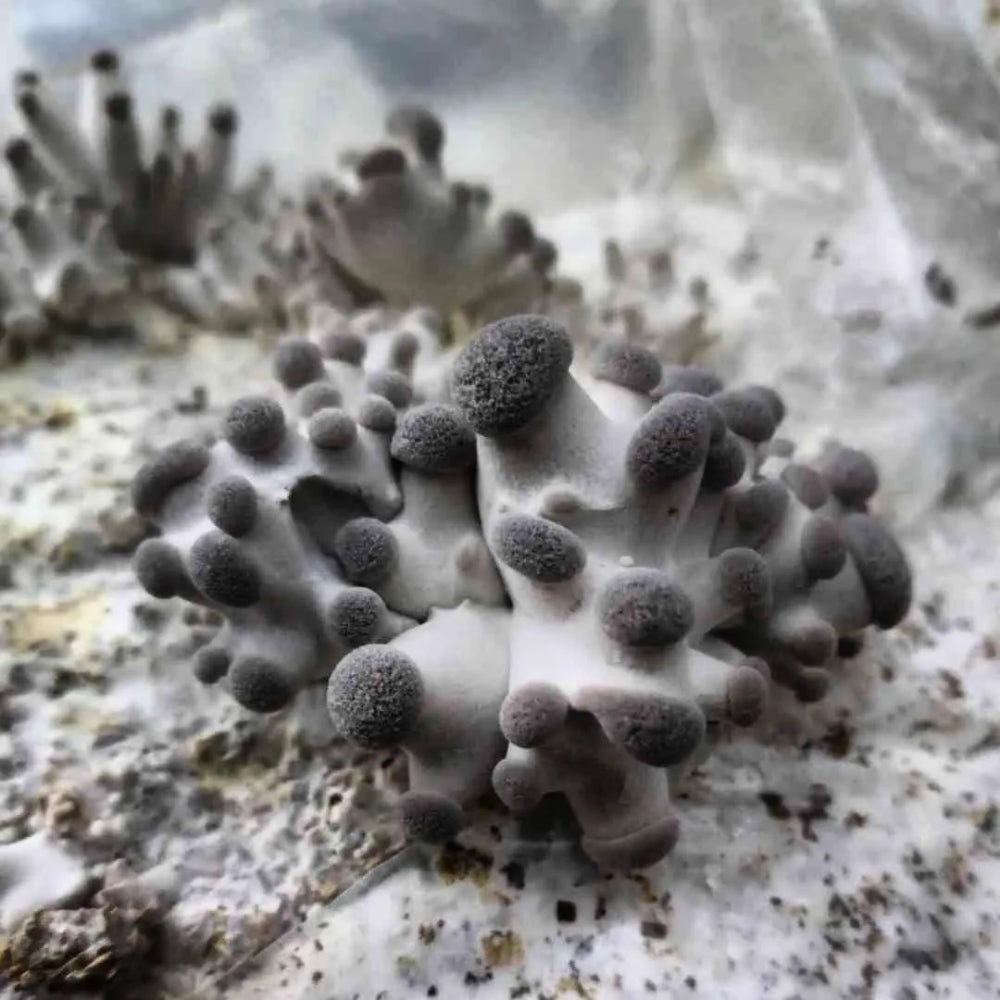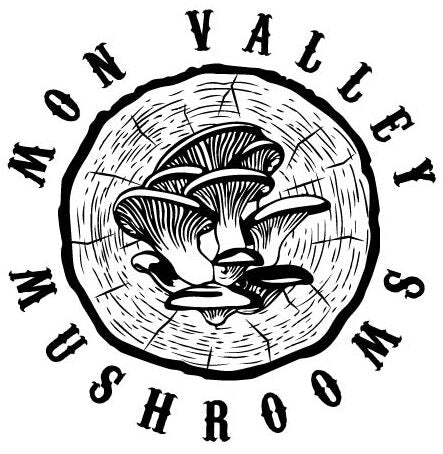At Home Kit Instructions

Hello! It's your at home kit.
Inside, you’ll find a bag of mushroom mycelium (roots) and spray bottle. For best results, follow the instructions below.
- Fold back the box flaps (or cut them off using scissors). Leave the bag inside the box.
- Place your box out of direct sunlight and away from fans, vents or dehumidifiers. Mushrooms like humid environments.
- Using a clean sharp knife, slice an X opening in the top of the bag.
- Using the included spray bottle, mist the bag opening several times a day with water.
- After a few days, tiny mushrooms will start to grow or “pin” in the opening.
- The pins will grow and double in size every day, growing into a cluster of mushrooms.
When to harvest:
Blue Oyster
Caps lighten in color. Cap edges start to flatten out
Pioppino
Caps lighten in color, veil starts to break away from the underside of the cap, cap edges start to flatten out
Lion’s Mane
The fuzz-like surface starts looking more like hair.
Golden Oyster
Cap edges flatten and start to look wavy.
Black Kings
Cap edges flatten and turn upward
Harvesting Instructions
-
When Harvesting
The entire cluster must be harvested at once. Try to rock and pull the cluster off in one piece. Remove any excess bits of mushroom from around the X opening after the cluster is removed from the bag.
-
After Harvest
Use packing or duct tape to close up the X opening.
For a second harvest, flip your bag upside down and slice an X opening on the opposite side of the bag.
Mist the bag opening several times a day. Mushrooms will pin and grow just as they did with the first flush.
-
After Second Harvest
it is possible to extend the life of the mycelium outdoors by crumbling and layering it between pieces of cardboard. Results will vary. Spent mycelium also makes a great addition to compost.
Handling/Storage
Store in the fridge or out on the counter.
Do not store in airtight container
Do not rinse or wash. Our mushrooms are chemical-free.
Fresh mushrooms often dry/crack around the edges as they dehydrate, form a cloud-like fuzz on their stems, and deposit a dust-like layer of spores that is similar to pollen. All of these are normal, and do not affect mushroom quality.
Prepping/Cooking
Sauté, roast or boil into soups, stews, and casseroles. Whole cooked mushrooms complement main dishes such as meats and pastas. They can be chopped into stir-fries or blended into gravy. Check out some of our favorite recipes! Make sure to cook your fresh mushrooms thoroughly. If it is your first time eating a particular mushroom species, try a small amount to check for allergies.
